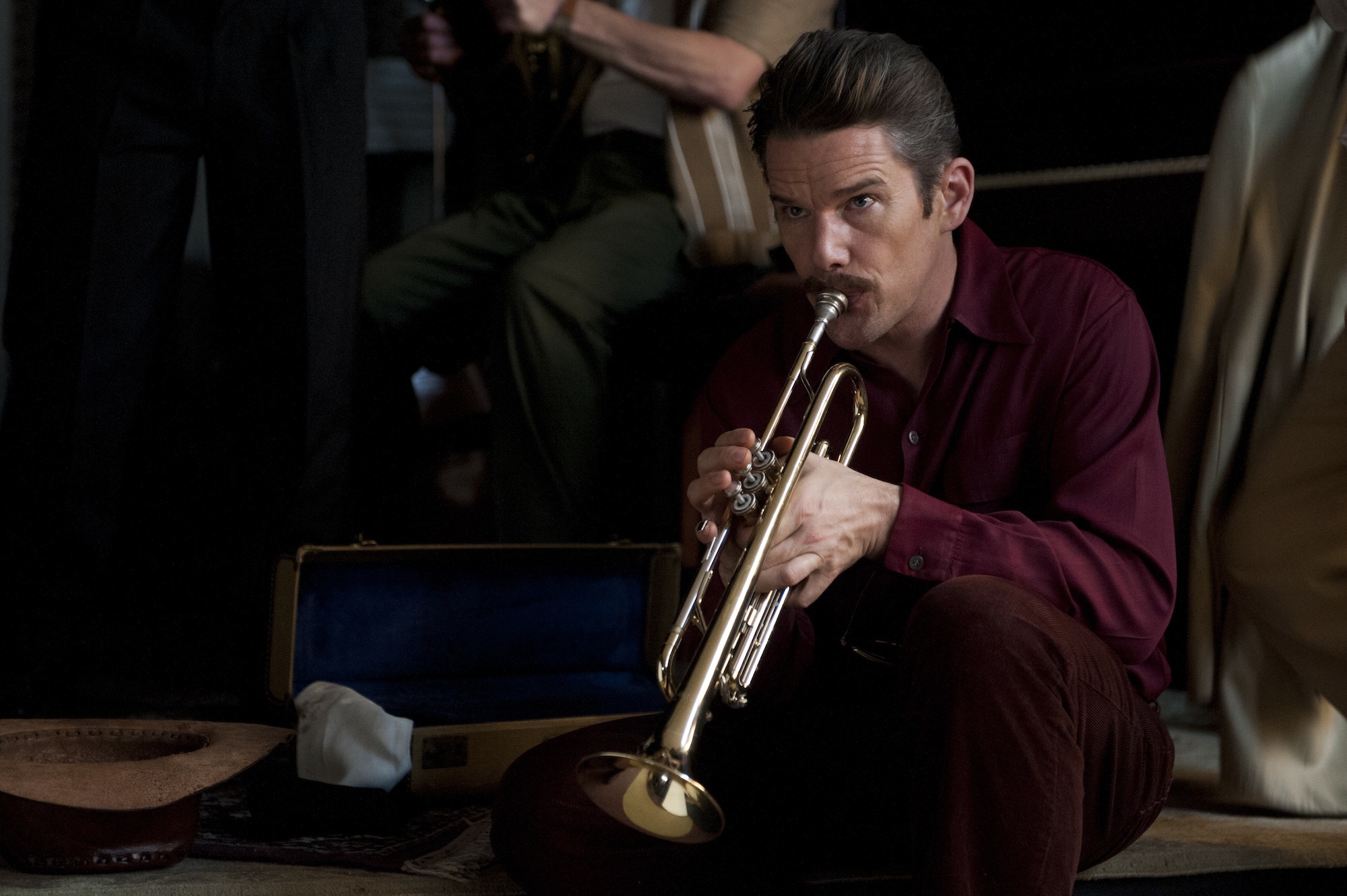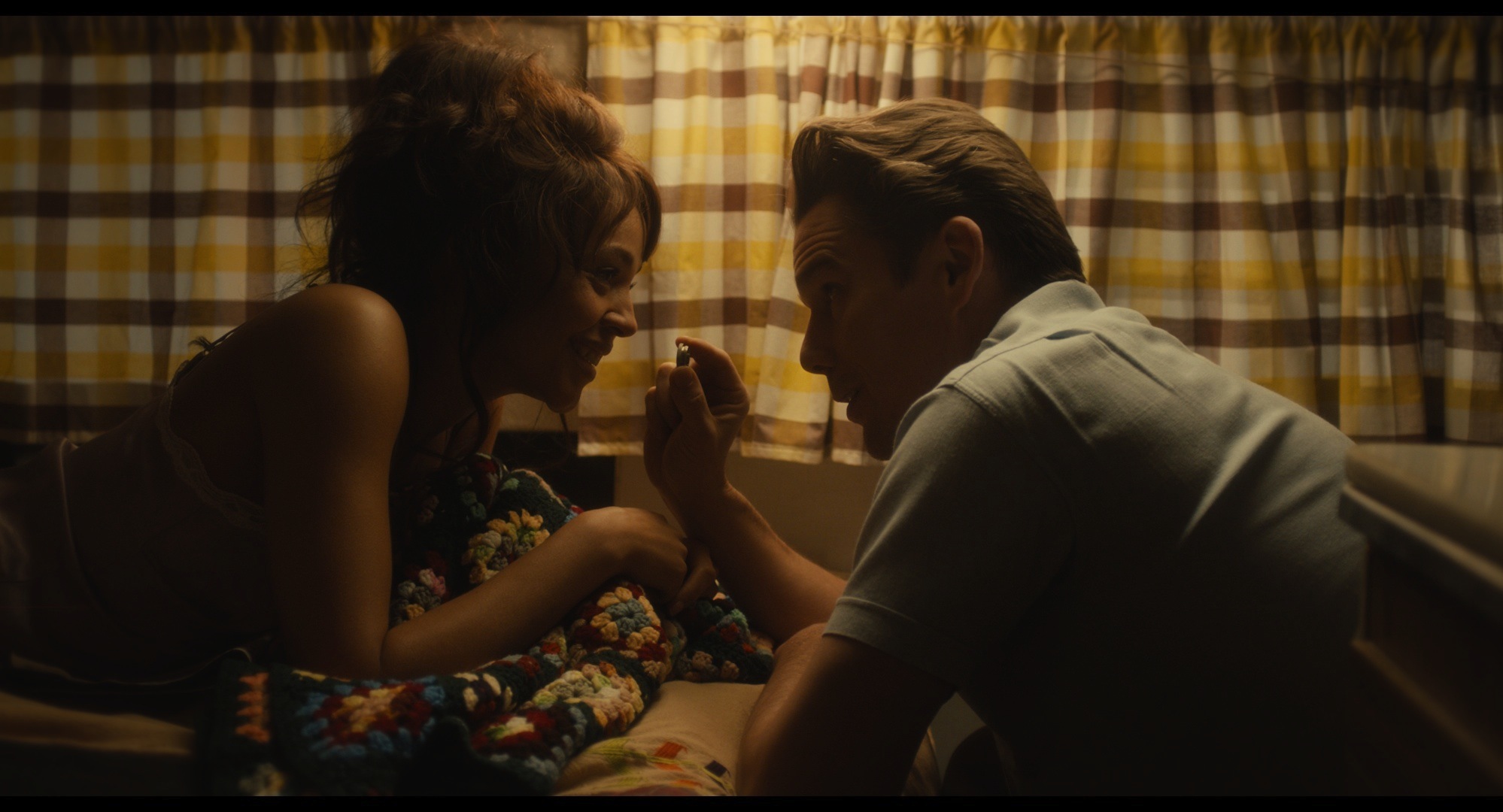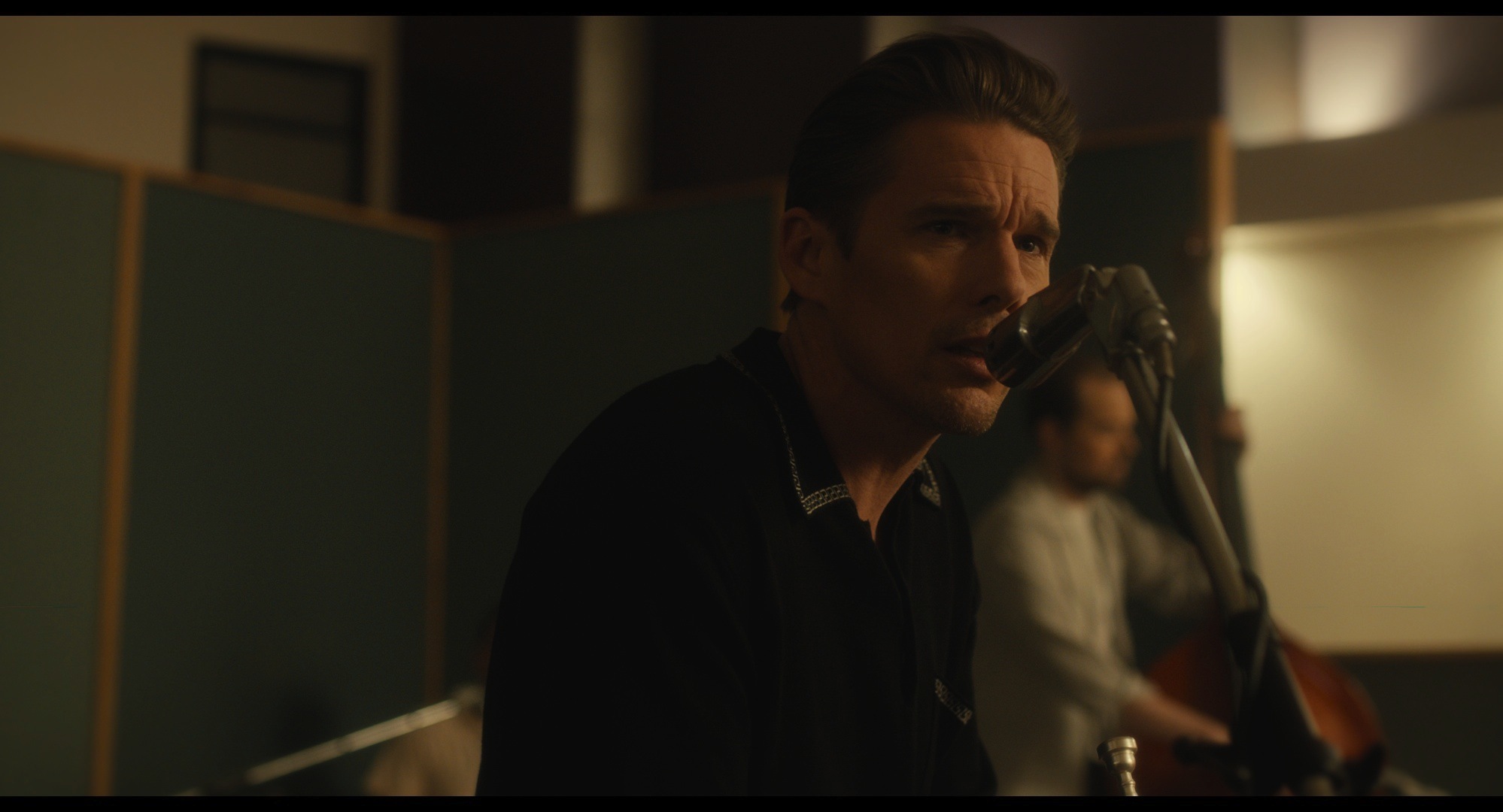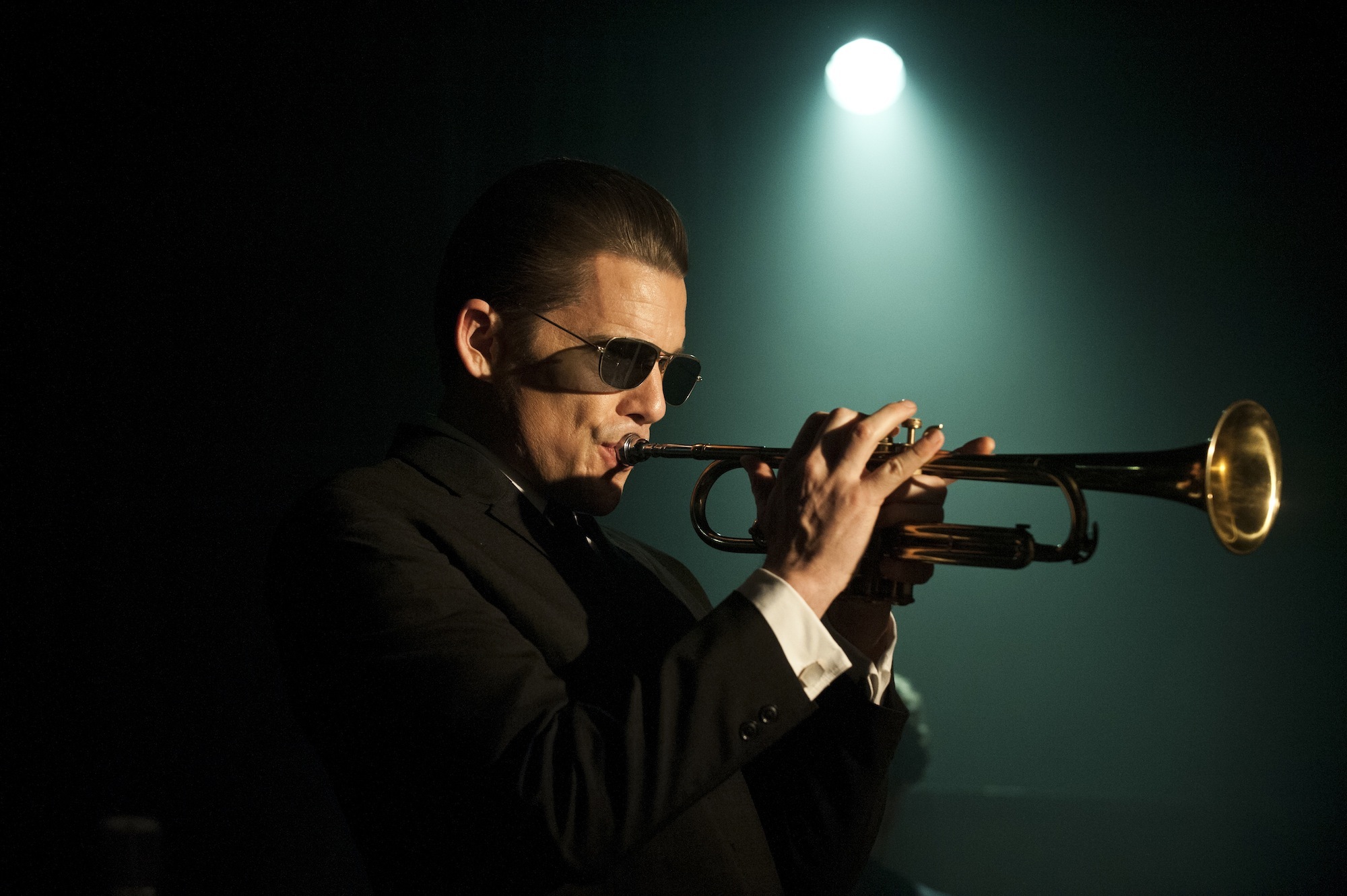Throughout the early 50s, Oklahoma-born trumpeter Chet Baker was making waves in the West Coast jazz scene for both his improvisational melodies and his chiseled good looks. He was named Downbeat Magazine‘s Trumpeter of the Year twice, despite squaring off against titans like Louis Armstrong, Dizzy Gillespie, and most notably, Miles Davis. But by the early 60s, Baker was wrestling with a serious heroin addiction. Before his dependence on the drug claimed his life in 1988, Baker’s addiction was considered the catalyst for a 1966 assault that ruined his embouchure. Many thought his career was over.
A new film, Born to Be Blue, is a Baker biopic that blends the facts of the jazz great’s turbulent life and career with fictional flourishes inspired by them. It imagines what Baker’s life was like during the dark decade between his early ascent and his return to the scene in the late 70s — the years he retrained himself to play with dentures, pumped gas to make a living, and struggled to stay clean. The film’s star, Ethan Hawke (an avid jazz fan), brings boldness and clarity to this unfamiliar Chet; his performance provides a window into the dizzying highs and difficult lows that colored Baker’s life, and consequently, shaped his iconic sound. We caught up with Hawke to learn more.
Some jazz musicians had really amazing senses of style, especially Chet Baker. What role did fashion play in this film?
There are two extremely iconic images of Chet Baker. One is from the beginning of his life — the William Claxton black and white photos — and the other from the end of it — the Bruce Weber film Let’s Get Lost. Born to Be Blue‘s beginning scene shows a movie within a movie. We really tried to have that scene speak to the Claxton iconography, recall those beautiful black and whites. In the last scene of the film, I wear exactly what Chet is wearing in Let’s Get Lost. But between them, it was fun to see him in clothes we’d never seen him in — these middle years when he was not as famous. In some pictures from that era, you find him with a moustache and crazy fringe jackets. It was really interesting for us to find a way to really let the wardrobe and fashion of the moment dictate and communicate the story.

Is collaborative styling or image research something that you often do when preparing for films?
Every project is different. I’ve played real people a little bit, but never a famous person. With that comes an audience who has something in its imagination already. So you have to speak to these preconceived notions a little bit, but if you get into imitation, then the film gets less interesting. We live in an era where we can see the real thing right now — we can Google image or watch real interviews with him. So a film has gotta be more interesting than that. And every movie has its own, unique ways to prepare. This one asked more of me than any role I’ve ever had. After I did this movie, I did a remake of The Magnificent Seven; all of a sudden, my training was riding horses and dressing like a rebel soldier from the 1860s.
I ask about fashion because at this film’s outset, Chet is called “the James Dean of Jazz.” It got me thinking about how style and aesthetic can really shape our understanding of music.
At his height of popularity, Chet was named best trumpeter of the year by Downbeat Magazine. This was at a time when Miles Davis was playing the trumpet, Dizzy Gillespie, Louis Armstrong were playing the trumpet. Was Chet really the best jazz trumpeter of the year? Probably not; he’s just white and great looking. That’s who white audiences wanted to see. You can see that as a negative and something superficial, but I don’t blame Chet for it; that’s society. Chet is not the first white guy to be in love with black culture and black music. I think that his love was absolutely sincere and he was willing to do the work to be a jazz great, but he reaped some rewards by being one of the few white guys in the bebop scene.

It’s a culture that there seems to be a lot of renewed interest in, especially among filmmakers.
Everything goes in cycles, it’s so strange. When I was graduating high school, there were so many jazz films — Let’s Get Lost, Bird, Straight No Chaser, Round Midnight. It was really in the psyche, this longing for the past era. But then it disappeared; then nobody cared about jazz for a decade or so. Now in New York, you can go and see a Chet Baker movie and a Miles Davis movie down the block from each other — maybe even in the same theater.
Even though they’re films about a specific genre, it’s interesting to see what’s universal about iconic musicians. Jazz is so different from rock, but jazz musicians still have these kind of rockstar personas.
Definitely. Whether she was writing music or literary memoirs, Patti Smith always has that rock star charisma. Quentin Tarantino is like a rockstar director. And Chet had that rockstar appeal; Miles had it too. I think that’s what elevated them and elevated the genre. The power of personality is what gets people to care.

In the beginning of the film, Miles tells Chet to come back and play, “when you’ve lived a little.” This movie really does demonstrate how life experience and choices impacted Chet’s music.
If you listen to his performance live from Tokyo at the end of his life, there’s one heavyweight jazz critic that basically held out on Chet his whole life who said that performance is undoubtedly one of the great jazz performances ever. He has all the nuance and melody and beauty of that early West Coast swing, but now it’s full of pathos and sadness. It’s a true, mournful jazz; it’s beautiful. And he sure learned it the hard way. My secret favorite thing about this movie is that it really doesn’t tell how you’re supposed to feel about what happened, it just presents the situation to you. You can see the choices he made and you can think about them.
‘Born to Be Blue’ is in UK cinemas, on digital download, Blu-ray™, and DVD from July 25, 2016.
Credits
Text Emily Manning
